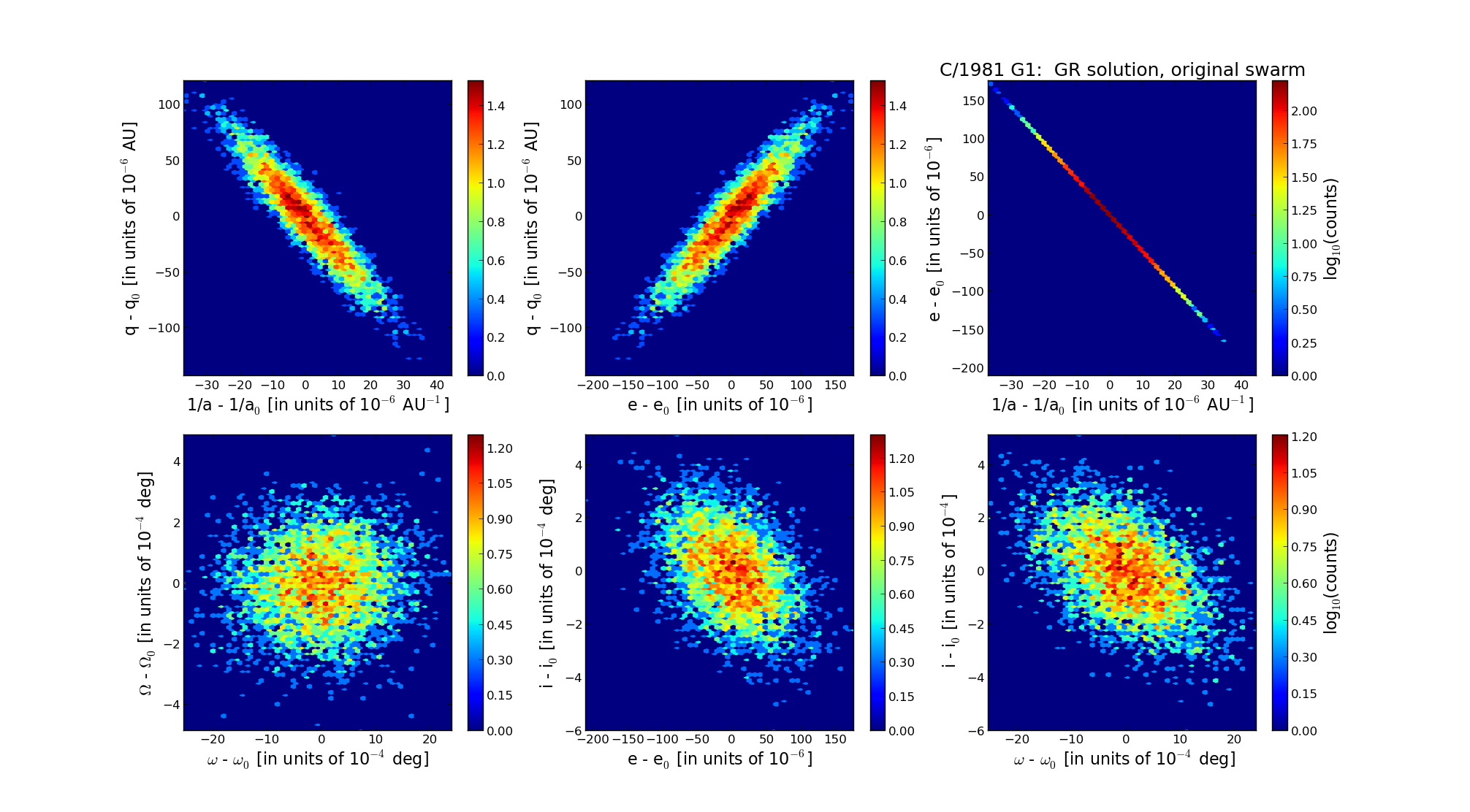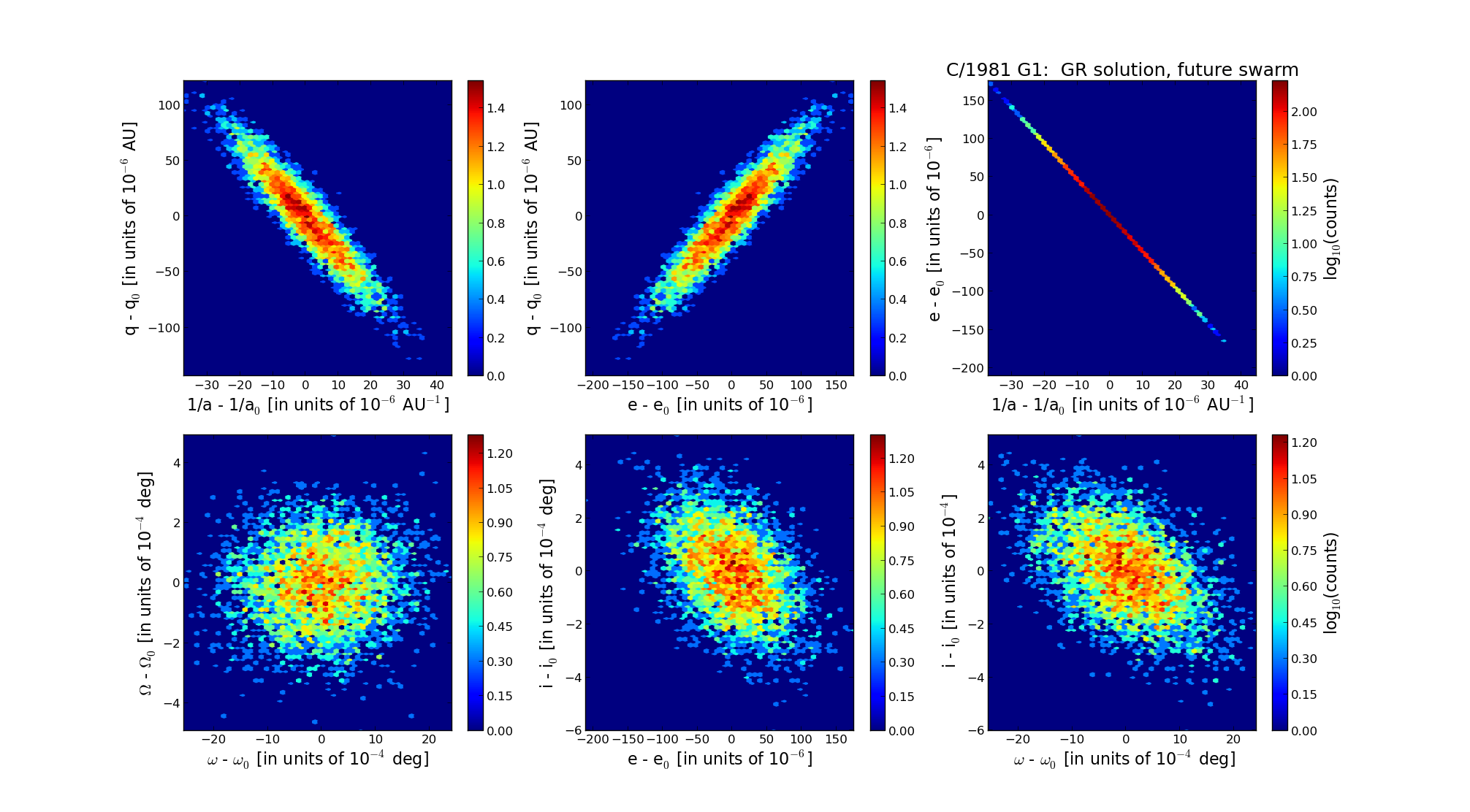| Solar System Dynamics & Planetology Group |
 |
C/1981 G1 Elias |  |
| Solar System Dynamics & Planetology Group |
 |
C/1981 G1 Elias |  |
| number of observations | 27 |
| number of residuals | 47 |
| data interval | 1981 Apr. 3 — 1983 Apr. 14 |
| rms [arcsec] | 1.32 |
| orbit quality class | 1a |
| Epoch (TT) | 19810824.0 | = JD 2444840.5 |
| time of perihelion passage (TT) | 19810818.228010 | ± 0.006418 |
| perihelion distance | 4.74252441 | ± 0.00003683 |
| eccentricity | 1.00067550 | ± 0.00005090 |
| argument of perihelion [deg] | 310.241141 | ± 0.000783 |
| longitude of the ascending node [deg] | 176.705296 | ± 0.000122 |
| inclination [deg] | 115.310230 | ± 0.000144 |
| inverse semimajor axis [10-6 au-1] | -142.44 | ± 10.73 |

| Epoch (TT) | 16750430 | |
| time of perihelion passage (TT) | 19810819.497508 | ± 0.006416 |
| perihelion distance | 4.73791979 | ± 0.00003626 |
| eccentricity | 0.99934341 | ± 0.00005003 |
| argument of perihelion [deg] | 310.302998 | ± 0.000786 |
| longitude of the ascending node [deg] | 176.647202 | ± 0.000123 |
| inclination [deg] | 115.293045 | ± 0.000143 |
| inverse semimajor axis [10-6 au-1] | 138.58 | ± 10.56 |

| Epoch (TT) | 22860206 | |
| time of perihelion passage (TT) | 19810818.713272 | ± 0.006353 |
| perihelion distance | 4.73088984 | ± 0.00003647 |
| eccentricity | 1.00007299 | ± 0.00004999 |
| argument of perihelion [deg] | 310.115795 | ± 0.000791 |
| longitude of the ascending node [deg] | 176.670277 | ± 0.000123 |
| inclination [deg] | 115.296625 | ± 0.000143 |
| inverse semimajor axis [10-6 au-1] | -15.43 | ± 10.57 |